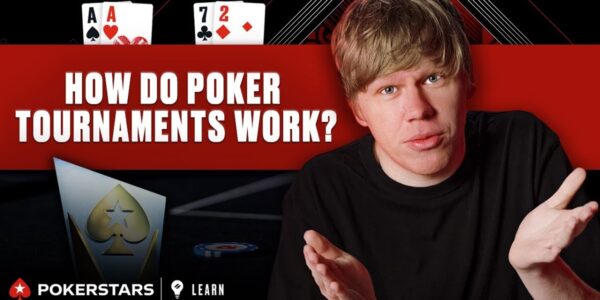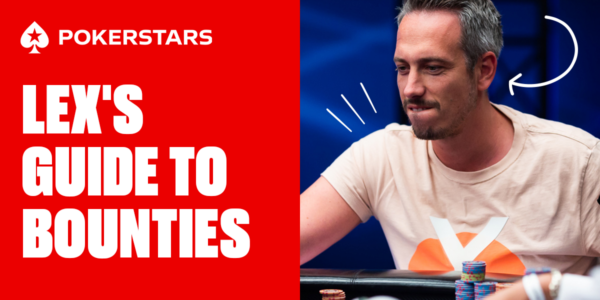Running Over Tight 6-Max Tournament Tables
Classical poker wisdom suggests that new players hone their skills at full-ring tournaments before jumping into the 6-max battlefield. Being able to play tighter ranges forces discipline and spaces out the action so that you can find your bearings and get a feel for the table. Even if you’re a newer player, however, there are some good reasons for trying your hand at some 6-max tournaments. One of them is running over tight tables as nittier full-ring players attempt to make the transition to 6-max.
Running over the Full-Ring Players
Some full-ring players are very aggressive and like to take advantage of tighter ABC regulars and nitty recreational players, but many are too tight. Some of these straightforward players will be taking shots at 6-max tournaments this year and so you will come across tighter, softer fields at the low and micro-stakes 6-max tournaments than you would find at 6-max cash games. The way to exploit people who are used to hiding in the calm of full-ring games is by stealing a lot, 3-betting a lot, and bluffing more post-flop. At the same time, it is well worth making some big lay downs when a tight regular is showing a lot of aggression. Being raised on the turn and river at the lower stakes events is a very strong indication that you should fold much more of your range than theory would suggest. The population is very often unbalanced towards value with such a line.
Example Spots
Here are some simple pre-flop examples of exploiting a tight table. Let us imagine that the table contains two tight aggressive regulars and three players who are far too tight, likely of full-ring heritage. This is a very favourable spot for winning lots of small pots and growing that stack.
Becoming Steal Happy
With the blinds at 800/1600 with a 200 ante, we open 8♦ 5♦ in the CO to 3800. This is a hand that is normally too weak to play in this position, but this table is too favourable to pass up the opportunity to steal the blinds. People are 3-betting far too selectively and even if we get a caller, we have good chances to win the pot with a c-bet. Our hand is not hopeless, and this will help our EV when the BB defends.


3-Betting Light
The BU is one of the aforementioned full-ring tournament players and has thus far failed to adjust to the 6-max format. With the blinds at 1k/2k with a 250 ante, Villain has 84,000 and we cover in the BB. He opens to 4.5k, the SB folds, and we look down at K♣ 3♣ . Going by the book, our hand is a pretty standard call that can perhaps be 3-bet bluffed at a low frequency. However, we expect this opponent to fold very often to 3-Bets here. His range is wide and unless he wants to make some uncharacteristically loose defends, he is going to end up folding something like 60-70% to a 3-Bet. If we make it 11k, we print money by risking 9k to pick up a pot of 7.5k. If we simplify by pretending that Villain’s only responses are shove and fold, then this play needs to work 9 / (9 + 7.5) = 54% of the time to break even. We expect this to be easily achievable against this foe, but even if it wasn’t, our play could still be positive because, sometimes, in reality, Villain will call – and when this happens, we have a shot at winning the pot with a c-bet or by simply flopping something decent.
Making Big Folds
When a nitty opponent suddenly wakes up with a rarely seen line, it is almost certainly a symptom of extreme strength. Later on, with the blinds up to 1.5k/3k with a 375 ante, we sit with a healthy stack of 282,000. A tight player with 354,000 opens to 7k from the LJ (UTG for 6-max). Hero looks down at A♠ K♠ on the BU and makes it 19k to go. When it folds back round, Villain thinks for a while and then 4-bets to 70k. This 4-bet is so large that it simply cannot be the play of an experienced regular. More likely than not, this is a highly unbalanced and strong range from a weaker opponent. At the very weakest we are looking at QQ or AK, but even these hands are quite likely to be played as a call more often than not. There are only 6 combos of KK-AA, but these hands are by far the most likely from a decision-making standpoint. We can forget about the idea of being bluffed by this sizing and player-type. Our equity against all of the KK+ and half of the combos of QQ and AK is a dismal 39%. Shoving and calling are both losing plays given this analysis and we have to patiently fold our monster starting hand.
Survival is everything on such a tight table. It would be a real shame to blunder away our tournament when we have so many lucrative opportunities to run over the table in smaller pots. These will add up and grant us a very good shot of a big cash.
4-Bet Bluffing
In the last hand, we would have been in a really tough spot had our opponent been someone who was capable of 4-bet bluffing. This is a play we should wield aggressively against any opponent who is happy to 3-bet aggressively, but not play big pots. A classic example of this in a 6-max tourney goes as follows:
A little later in the tournament, we are well past the bubble, and the blinds sit at 2.5k/5k with a 675 ante. We have 640,000 after a sick run of cards and getting paid off too. We are dealt K♠ J♦ on the BU and raise to 12k. The BB is a tight aggressive regular who is getting fed up with our incessant stealing. He has 360,000 and 3-bets to 34k. We make it 74k. If Villain shoves we have a very easy fold, and this is a perfect chance to attack. By making this 4-bet bluff we are taking advantage of a few conditions being right:
- Villain’s impatience may well have caused him to put too many weak hands in his 3-bet range here. This is the danger with reacting to game-flow with a random hand and not balancing your range.
- Losing 74k is much more affordable for us than it is for Villain.
- A shove is a very risky expensive move for Villain due to the sizing of our 4-bet and the effective stack.
Overall, this play should net a healthy profit.
Conclusion
Stay tuned for the next article in this series which will deal with how to combat a table full of aggressive 6-max regulars. You will not always get seated in such a favourable nit-fest as we did today!













